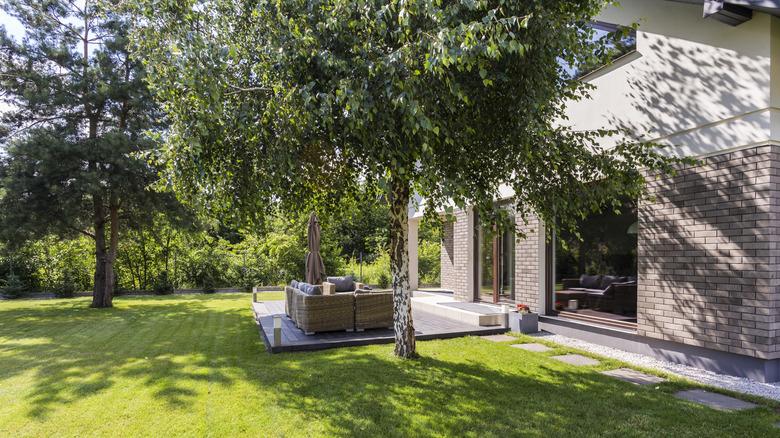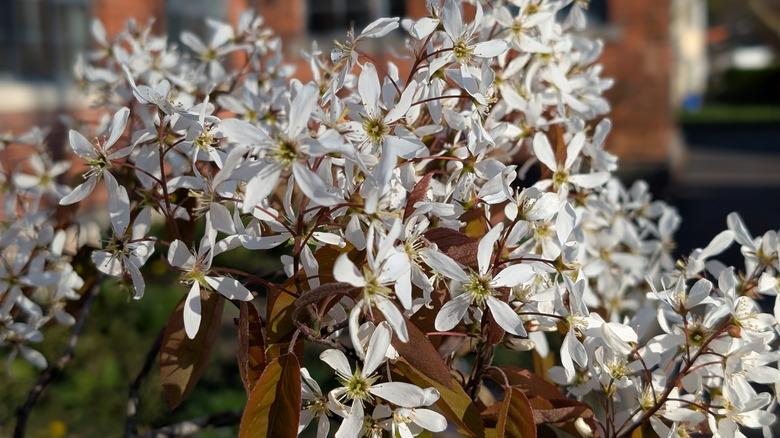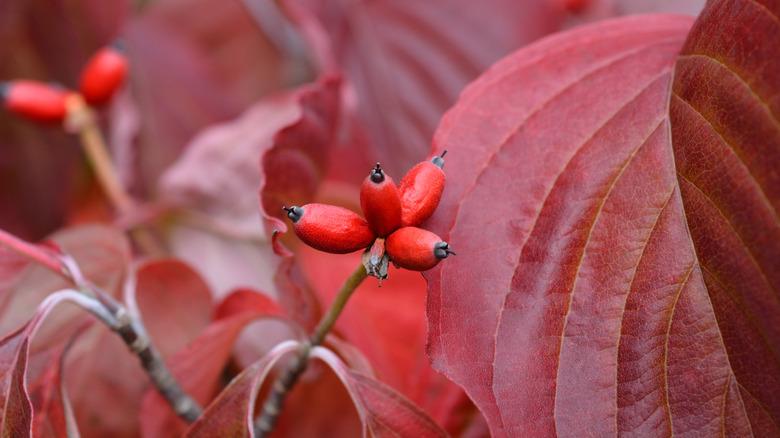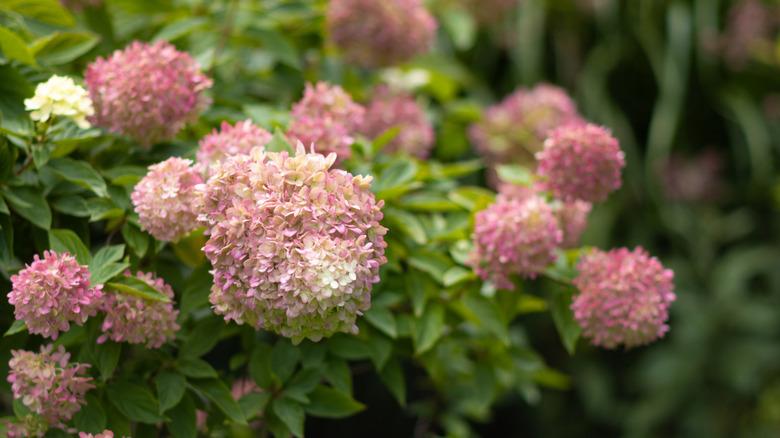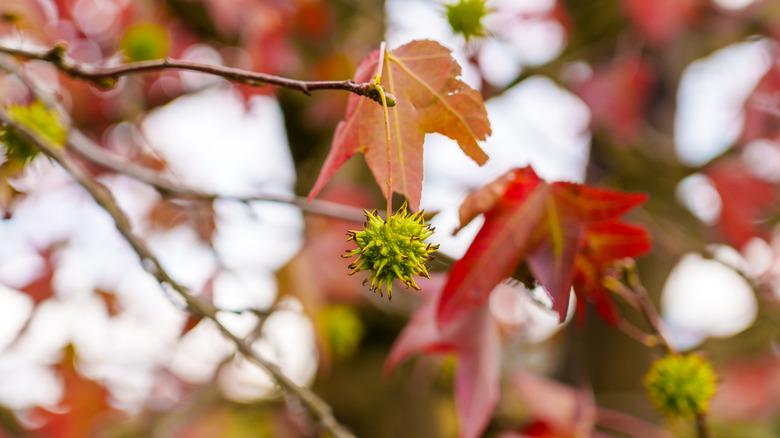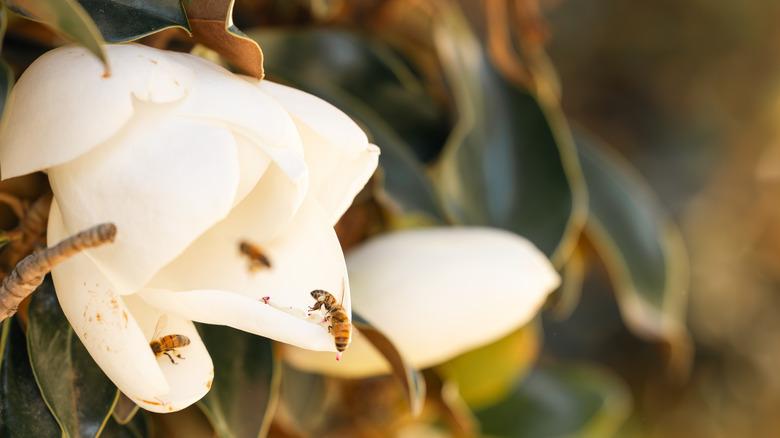11 Trees That Grow Well In Shade And Don't Need A Lot Of Extra Maintenance
Whether it's the personal benefits of privacy and gorgeous fall foliage, or the environmental benefits like improved air and soil quality, you really can't go wrong with adding some trees to your landscape. Not only are they a stunning visual addition, but also a sound investment. Studies show that trees in your yard may bump home value by 5 to 15%. With all these benefits, there seems little reason not to plant trees, except if your yard is largely shaded. Plants all need sunlight to grow, after all. Fortunately, there are quite a few shade-loving trees that actually do well in a shaded environment.
As you research the best shade trees for your home, look out for trees described as woodland borders or understory trees. These are trees that typically grow on the edges of woods and forests in environments that usually get around three to four hours of full sunlight. This smaller window of sunlight means these types of trees will do well in a yard that deals with shade. If your yard may get even less sunlight than this, it doesn't mean you have to give up your tree dreams. Many species will still do well; they may just have less vibrant ornamentations with the turning of the seasons. With that in mind, consider some great options like Degroot's Arborvitae (great for privacy), the little gem magnolia (gorgeous blooms).
Degroot's Spire Arborvitae
You've likely seen this tall tree around the edges of homes and other properties as it's a perfect creative plant solution for a private backyard oasis. It's full, thick greenery easily blocks prying eyes and helps define and enclose previously open yards. This one does best in full sun, but experts say partial shade will do. Keep in mind that this plant is a bit picky and doesn't like dry climates, cold, or the wind. If you're not lucky enough to live in a mild climate, consider a different tree from this list.
Serviceberry
If your yard is heavily shaded, check out the serviceberry tree. Unlike some others on this list, serviceberry does well in full shade. They grow up to 20 feet and bloom white blossoms in spring. Their flowers are gorgeous, but they only last a short while. Don't worry, serviceberry makes up for this by also providing edible fruit. Birds like goldfinches and blue jays are fans of serviceberry's fruits so if you like blueberry flavor, sit back, take a bite, and enjoy watching the birds stop by your yard for a sweet snack too.
Cherokee princess dogwood
Cherokee princess dogwood is a species of tree perfect for a shaded yard, as it prefers a bit less sunlight. Its attractive features last all year long with bright green foliage, spring florals, and stunning red berries. Not only is this variety its own beautiful landscape addition, but it will also draw in other aesthetically pleasing creatures like birds and bees, which can boost your garden's overall health and aesthetics. Though a hardy species, the Cherokee princess dogwood is sensitive to large temperature changes, so it's suggested to protect them with a few inches of mulch.
Carolina silverbell
As a tree that is sensitive to heat, the Carolina silverbell is an excellent choice for a partly shaded yard. It's smaller than some others in size (20 to 40 feet), so it won't overwhelm the other aspects of your garden and instead work as a cohesive part of your landscape. The silverbell's attractive features include unique, snowy white flowers that droop from branches as well as peeling bark and yellow fruits. The flowers turn and drop quickly in the fall, so while other trees draw you in with their showstopping color changes, the Carolina silverbell stands out more for its flowers while in bloom.
Appalachian redbud
If you live in a hot climate the Appalachian redbud is for you. It's known to do well in heat when paired with part shade. During springtime this multi-trunked tree will bloom heavily with stunning rose purple flowers plus color changing leaves that make them the perfect eye-catching addition. It is a smaller tree (about 15-24' tall) that will fit well in the average backyard. Another plus of the Appalachian redbud? They're known to provide an early source of nectar to hummingbirds, making them a surefire way to attract hummingbirds to your yard without a feeder earlier in the season.
Portuguese laurel
This rare species dense and compact shape is perfect for small spaces. It does well in partial shade and boasts attractive foliage. The tree's summer blooms are lovely and will add a sweet fragrance to your yard that will be the perfect touch to a night of al fresco dining guaranteed to wow your guests. In a container, it can be planted year-round so there's no reason to delay picking yours up now. One important note of warning, this plant has some elements that are toxic to humans and animals so be careful with pets and children. Another important note is that certain parts of the U.S. consider this plant invasive, so it is important to check before planting.
Japanese maple
Many species of maples can grow to towering heights, but the Japanese maple stays around 25 feet, a comfy height for any backyard. A defining characteristic of this tree is its thin, finger-like leaves that turn stunning colors in the fall. Its dainty attributes and layered look will add soft textural contrasts to your yard. Despite its delicate features, it's a hardy tree that requires little maintenance. Plant your Japanese maple in partial shade as it can scorch in too much sun (though with too little, its leaves will be less vibrant come fall) and soil that is consistently moist.
Vanilla strawberry hydrangea
This hydrangea showcases flowers that turn a stunning and unique vanilla strawberry color as they bloom (hence the name). Though it's often grown as a shrub, it can be grown as a short, single-trunk tree. In the sun, the blooms are said to last three to four weeks, but in partial shade, you can look forward to colorful flowers for six weeks and oftentimes enjoy the blooms fading to purple all the way into late September. With such long-lasting color, the vanilla strawberry hydrangea is perfect for your picturesque backyard.
American sweetgum
The American sweetgum lines many suburban streets in the U.S. and is beloved for its spattering of yellow, orange, red, and purple leaves during the fall. Grow this sweetgum in partial shade with soil that's neutral to acidic. It'll bring great color to your landscaping, but do beware of its "gumballs". This tree drops fruit (nicknamed "gumballs") from December to April that are spiky and hurt if stepped on. To avoid this one downfall, plant the tree in a less-trafficked area of your yard so you can still enjoy its colorful leaf changes without battling its painful fruit.
Wildfire black gum tree
Not to be confused with the American sweetgum, the wildfire black gum tree has a pleasing pyramidal shape with dark green foliage that will turn a fiery shade of red in spring. It's an adaptable plant that does well in zones 4-9. The wildfire black gum tree is low maintenance but doesn't do well with pollution, so don't choose this shade tree if you live in an urban area. If you are a bird watcher, plant a wildfire black gum tree in your yard as it's a beloved nectar source for pollinators, and its fruits attract a variety of birds.
Little gem magnolia
Magnolia trees are widely recognized and loved for their beautiful white, fragrant flowers. The little gem magnolia is a cultivar of the southern magnolia and will slowly grow to roughly 35 feet. Mulch is helpful for newly planted little gem magnolias to keep its soil moist and protect its roots. Plant these trees in small groupings along the edge of your yard to use their dense shape for privacy and to add interesting pops of color throughout your space. They can also be grown in planters or large containers, making them easily movable around your yard.
